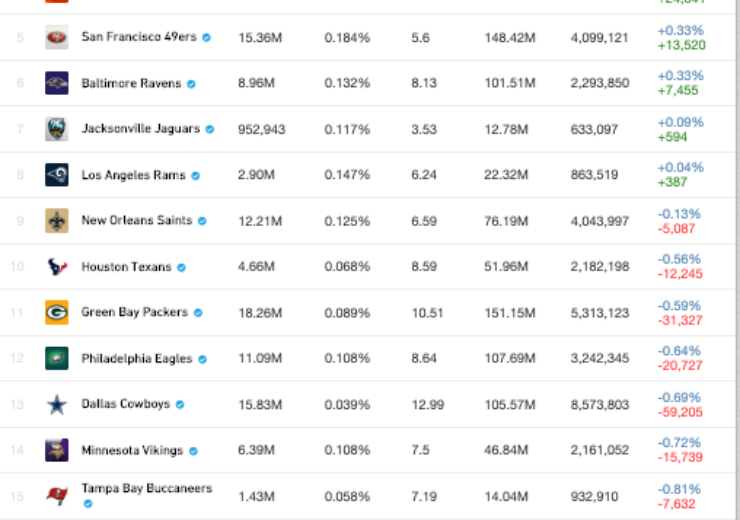The other day I stumbled upon a job description at an NBA team that intrigued me. It was for a “Director of Basketball Content,” which was intriguing because why would you need to label it “basketball content” when working for an NBA team? It led me to so many questions about what the role does and where it sits within the org.
After digging into the job more, I came to the conclusion that the job sits within the basketball operations side versus the business operations side of the organization. At first glance, this could sound like the perfect setup for anyone who works in social media. Why? Because the assumption is if you sit within basketball operations, you’ll have more access because that’s part of the organization that controls that.
This isn’t the first role that has ever put a social and content person under team operations vs. business operations. College athletics, particularly in football, have started hiring content personnel for individual teams and putting them under the head coach/operations vs. marketing. Recruiting has primarily been the driving force of this in college athletics.
Forget the fact that you shouldn’t have to work under the competition side of the business to get access — there are a lot of issues siloing creatives from the rest of business operations. Let’s break them down:
It can lead to burnout.
Having content or social people report into team operations can lead to a fast track to burnout. Why? Because their managers have no idea what it takes to get to point A to point B in their roles. And when you report to people who have zero idea what it takes to do the work, it’s hard to manage the expectations.
You mean, you can’t just make that video happen? 🙄
I cannot imagine putting a creative, especially a young creative, in a position where they have to respond to the head coach or someone high up in basketball/hockey/football operations. You are putting them in a situation where it feels nearly impossible to say no — creatives need a buffer who can protect them and advocate for them.
Setups like this can lead to dysfunction.
Having one part of content under team operations and another part under business operations could lead to dysfunction and hostility within working groups. I’ve been at this for nearly 14 years, been a part of a lot of different team setups and led teams — the reality is that people are human and if you create literal divides within the content and marketing group, you will feel it.
Additionally, the NBA job I came across read like there were two sets of social teams — one under basketball operations and one under business operations. You’re telling me you will have one group that gets all the access to players? That will not go well.
Leaders should strive to create an environment where collaboration is natural, roles are defined, and everyone is rowing in the same direction. Organizational structural plays a big role in this and matters a lot.
It puts people in a box.
One of the perks of being part of a larger marketing organization is that you are exposed to projects beyond social and content. When you are part of a broader marketing org, you are going to be part of conversations and assignments that allow you to flex and stretch your muscles. You will have a boss and peers who have been in marketing in some capacity and can help guide, coach, and offer growth.
If you put social and content people under team operations, they will not get the same exposure to the larger marketing function. And in the long run, that puts people in a box and could stunt their long-term growth.
It doesn’t maximize resources.
If you have your social and content team spread out within the organization and reporting to different people, there’s no way you will have a process in place to maximize resources. It could lead to redundancy, confusion and inefficiencies. You also won’t be able to let people flex on different projects either. Organizations that want to maximize their content resources will take a holistic view of input and output and have a fluid team, flexing into team operation content one day and brand the next.
If I’m being honest, I think content becomes a power play within a lot of organizations, but it’s not productive. It should not require content to sit under team operations to get access — or team operations to get serviced what they need. The leaders in team and business operations need to come together and create a process that works for all — as adults should do — but don’t create dysfunction within your organization and for your people because you are grasping at control.
But for all these reasons and more, there’s no excuse to keep separating brand, digital, social, and creative and content teams into siloed and completely different functions that don’t ladder up to a cohesive marketing org — in any situation. Organizations need to hire a CMO with brand, marketing, digital, content, creative and comms all under one umbrella because everyone should have the same goals.
Let’s stop the experiment of shuffling social and content teams from one department to another once and for all.

